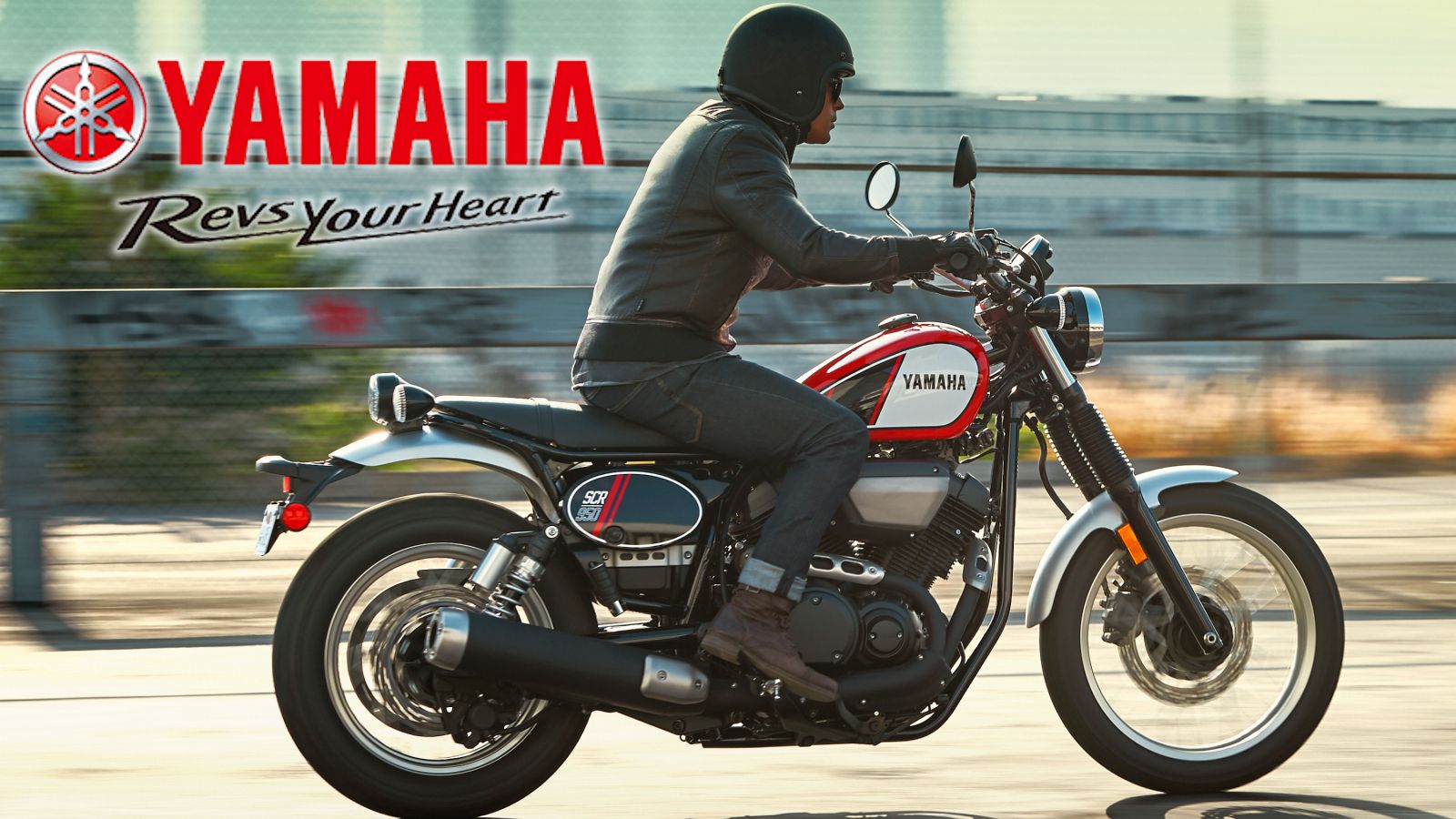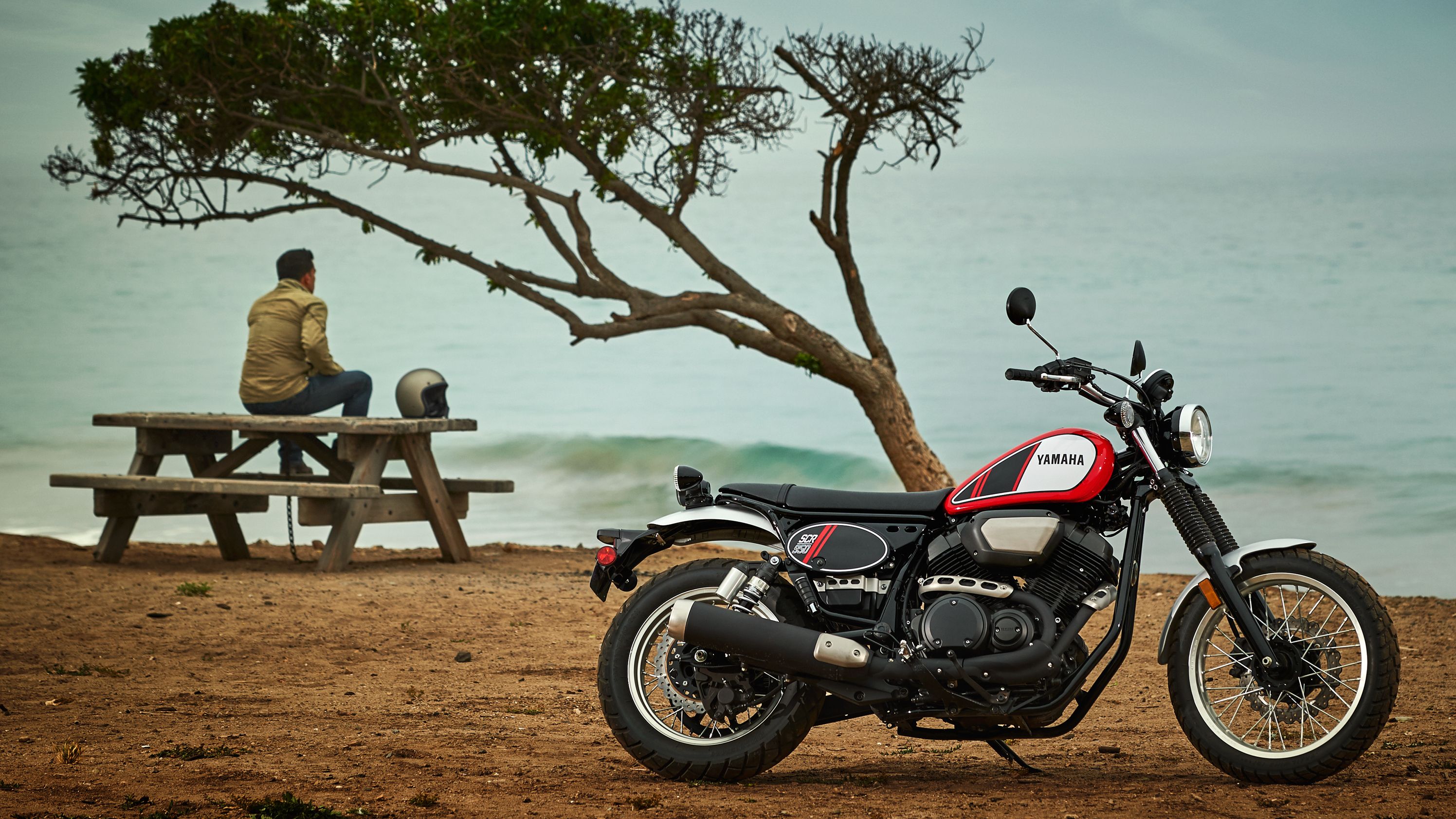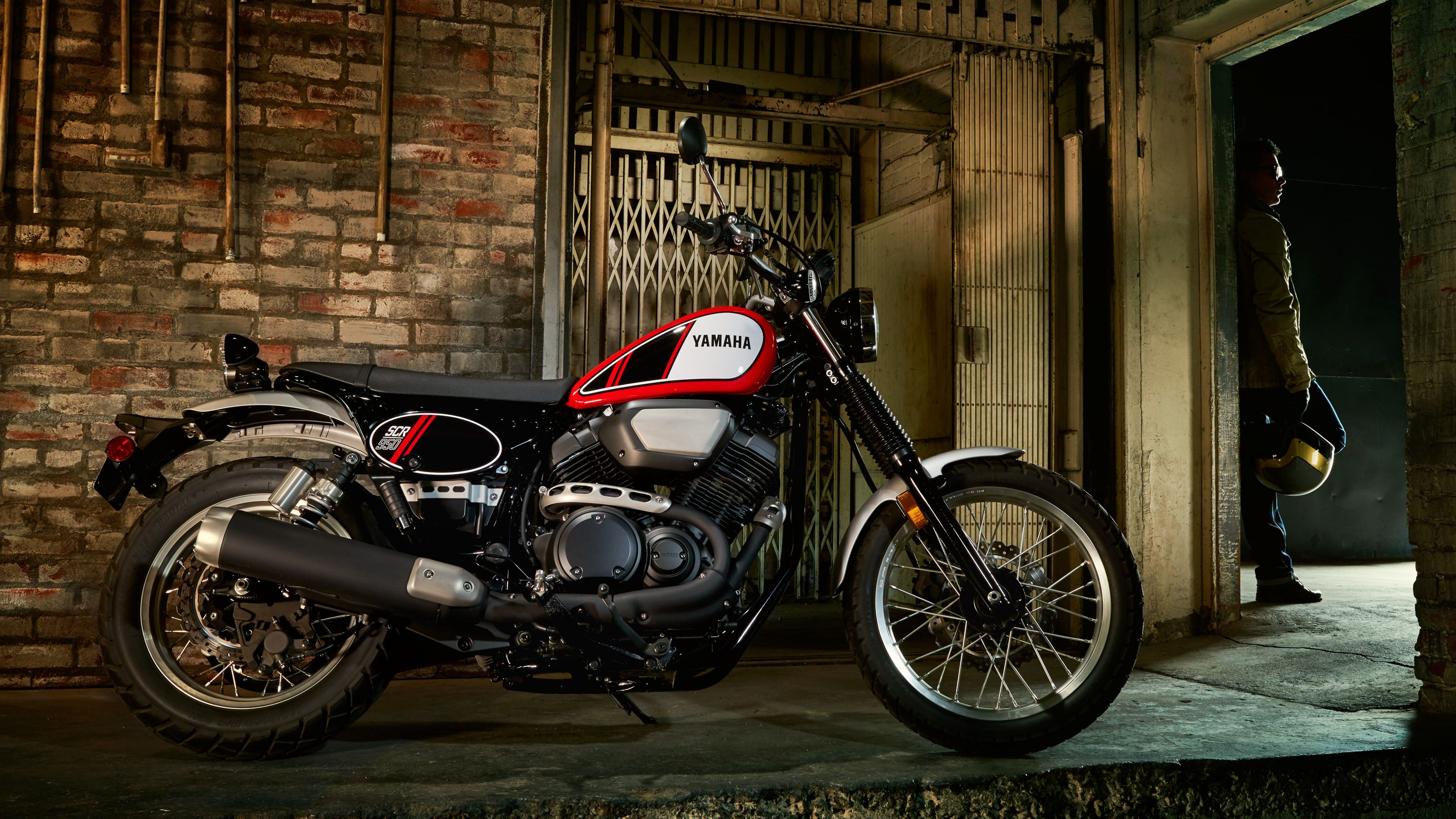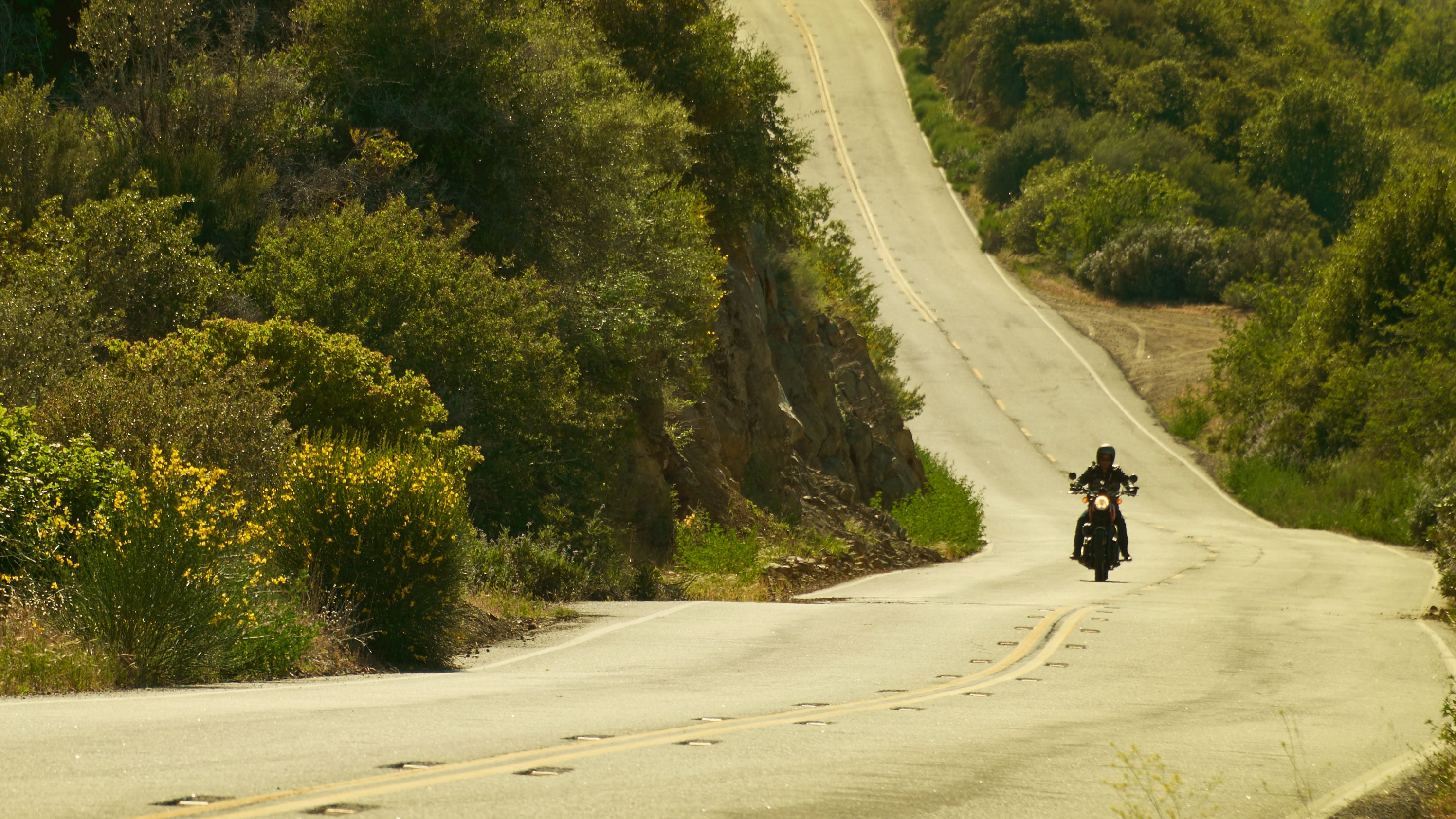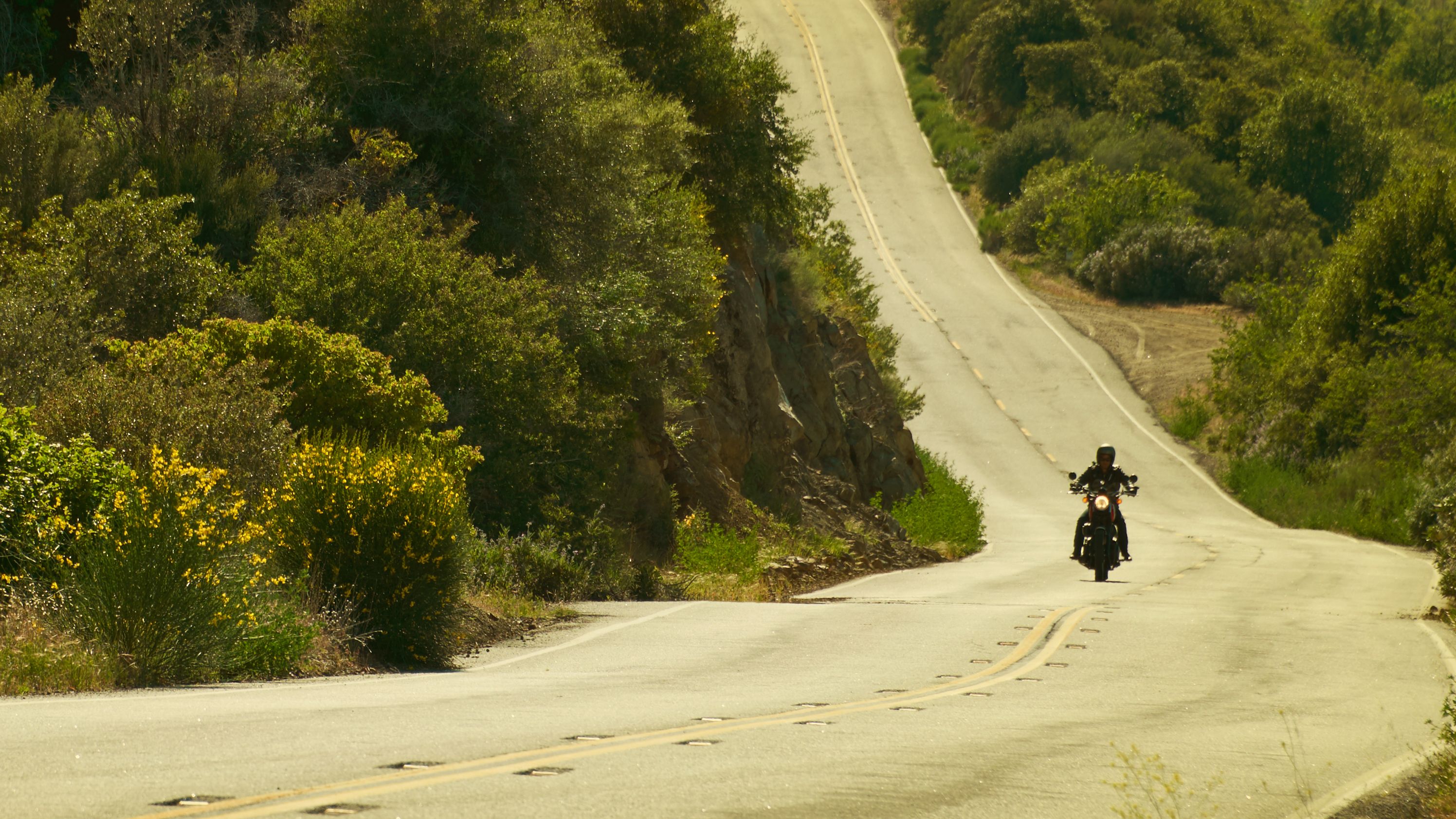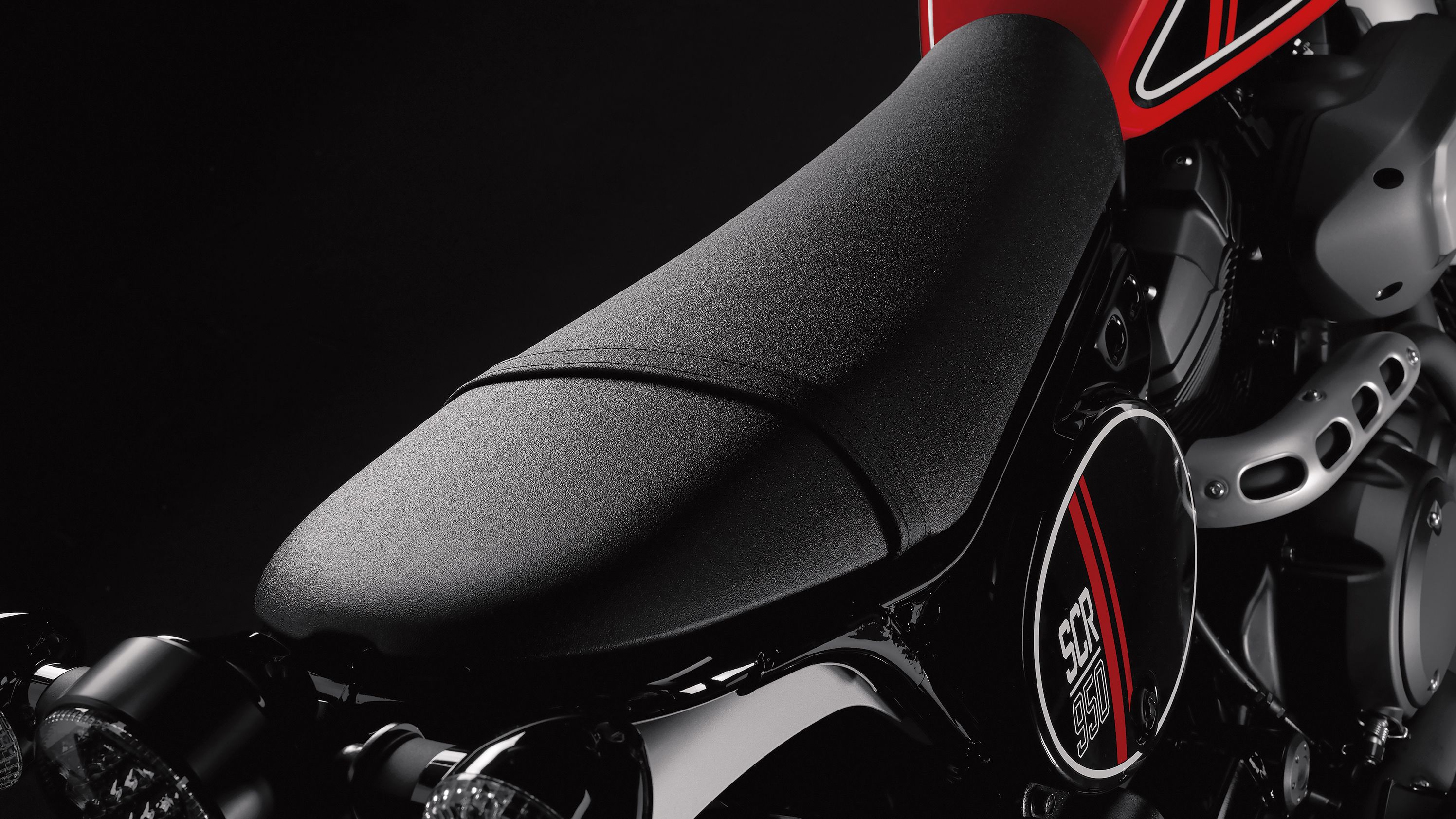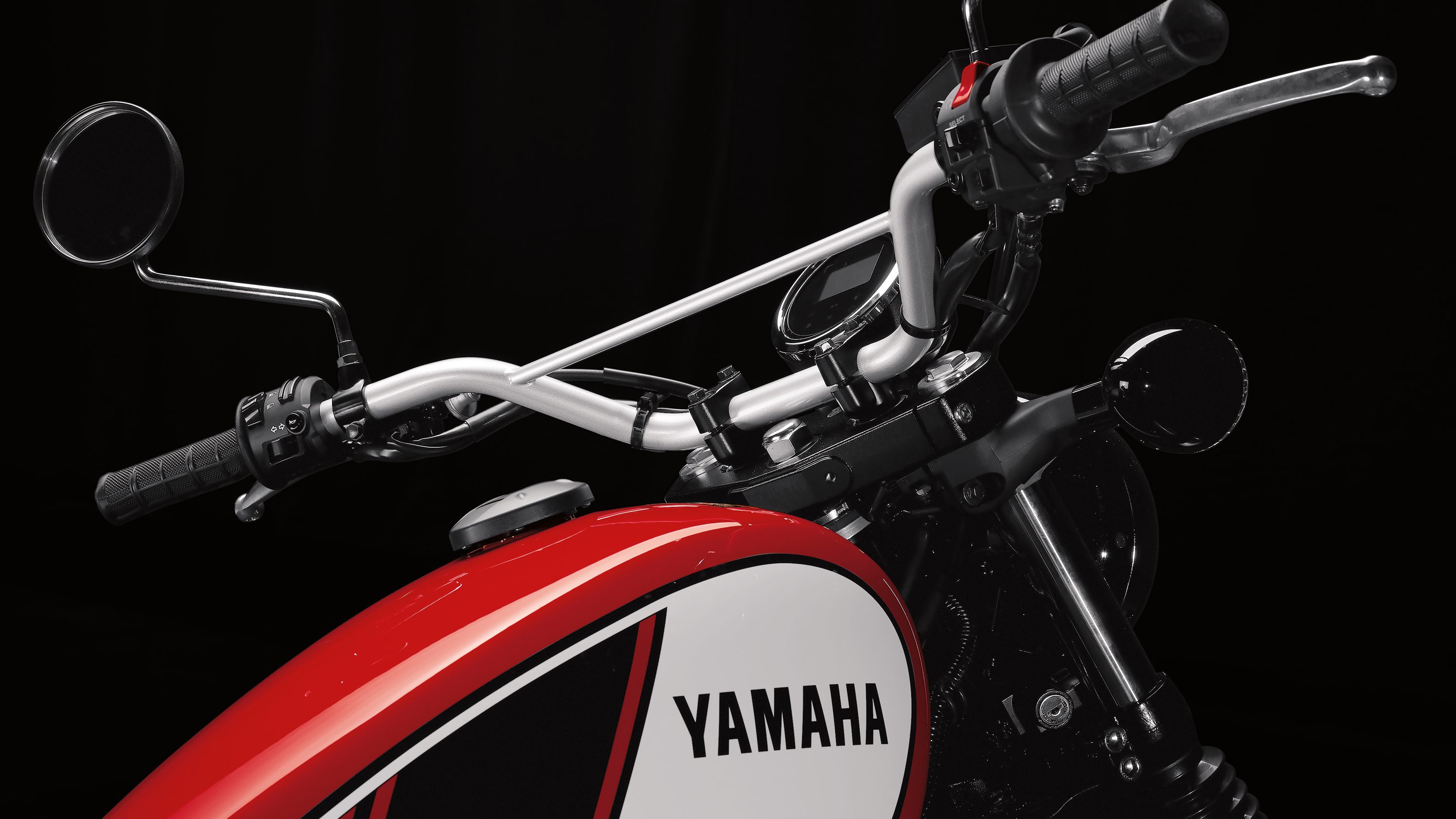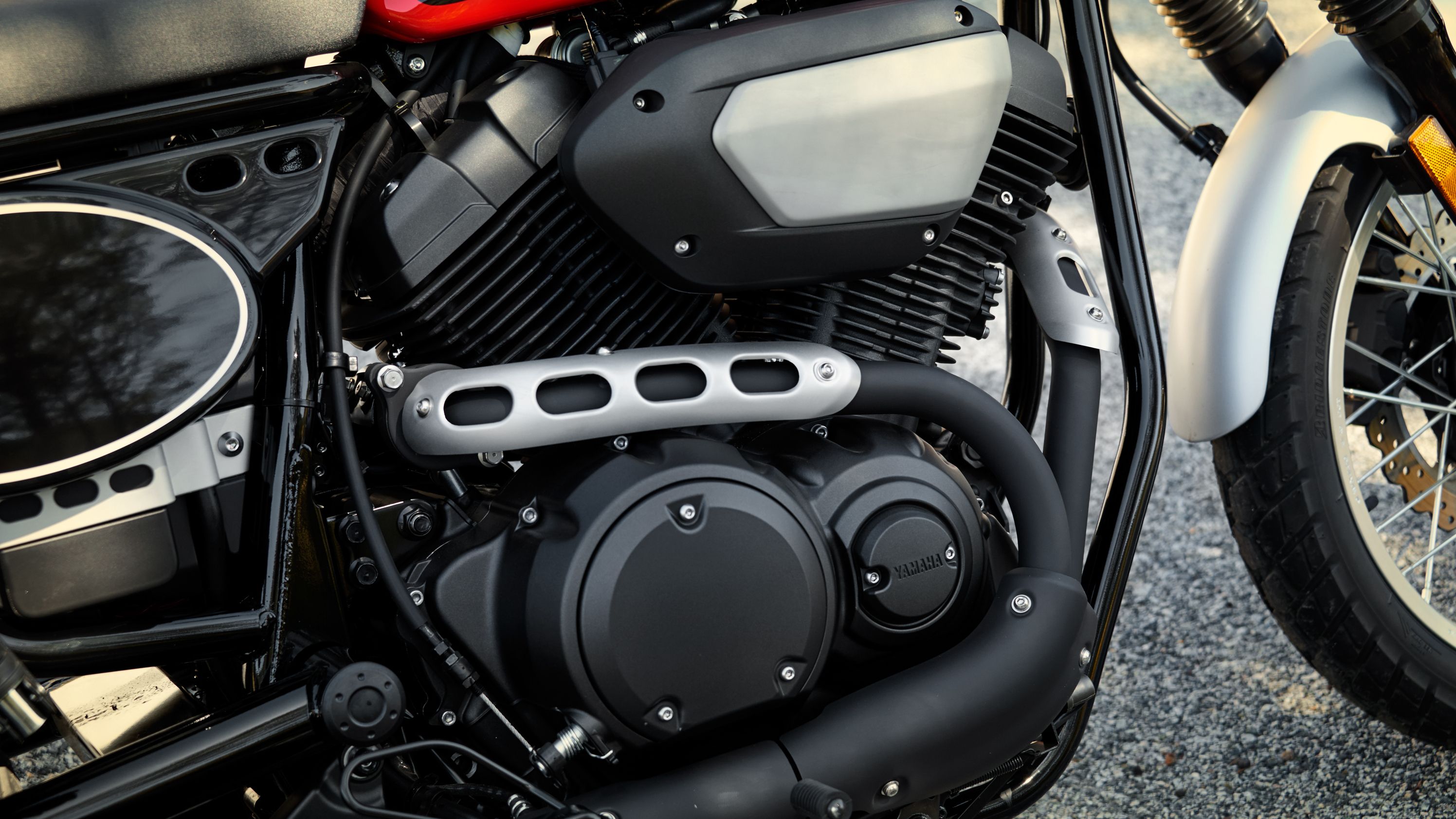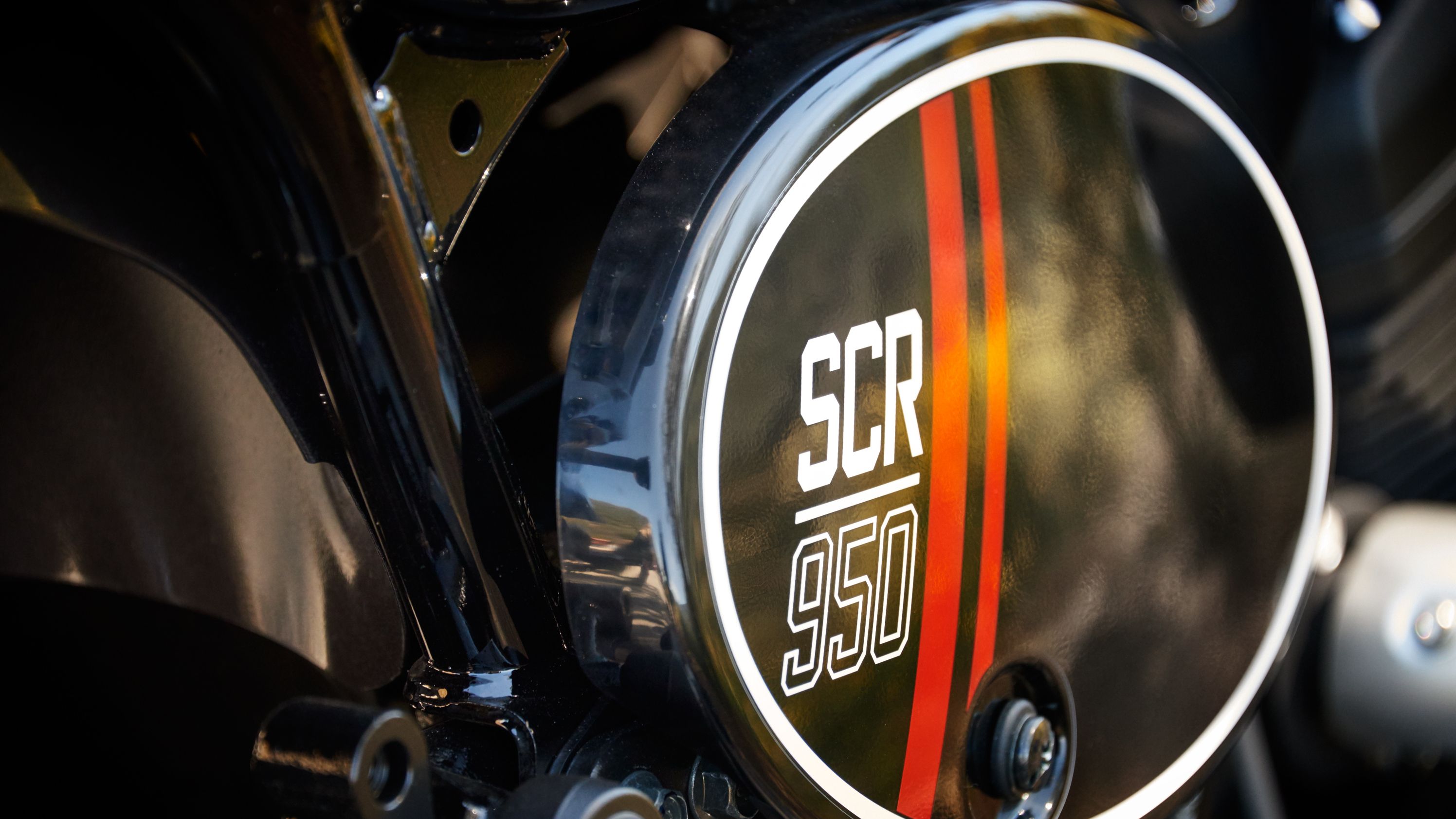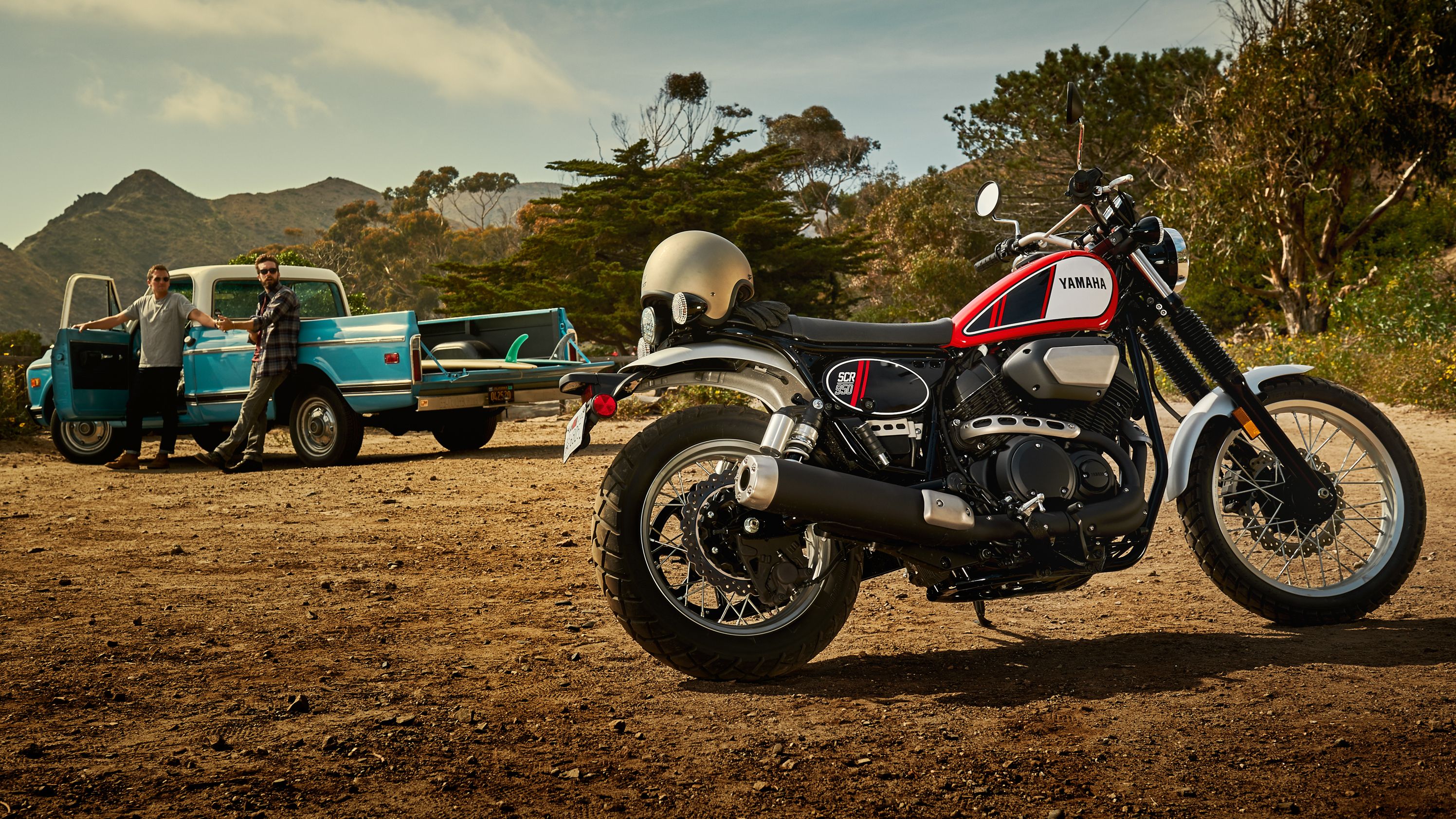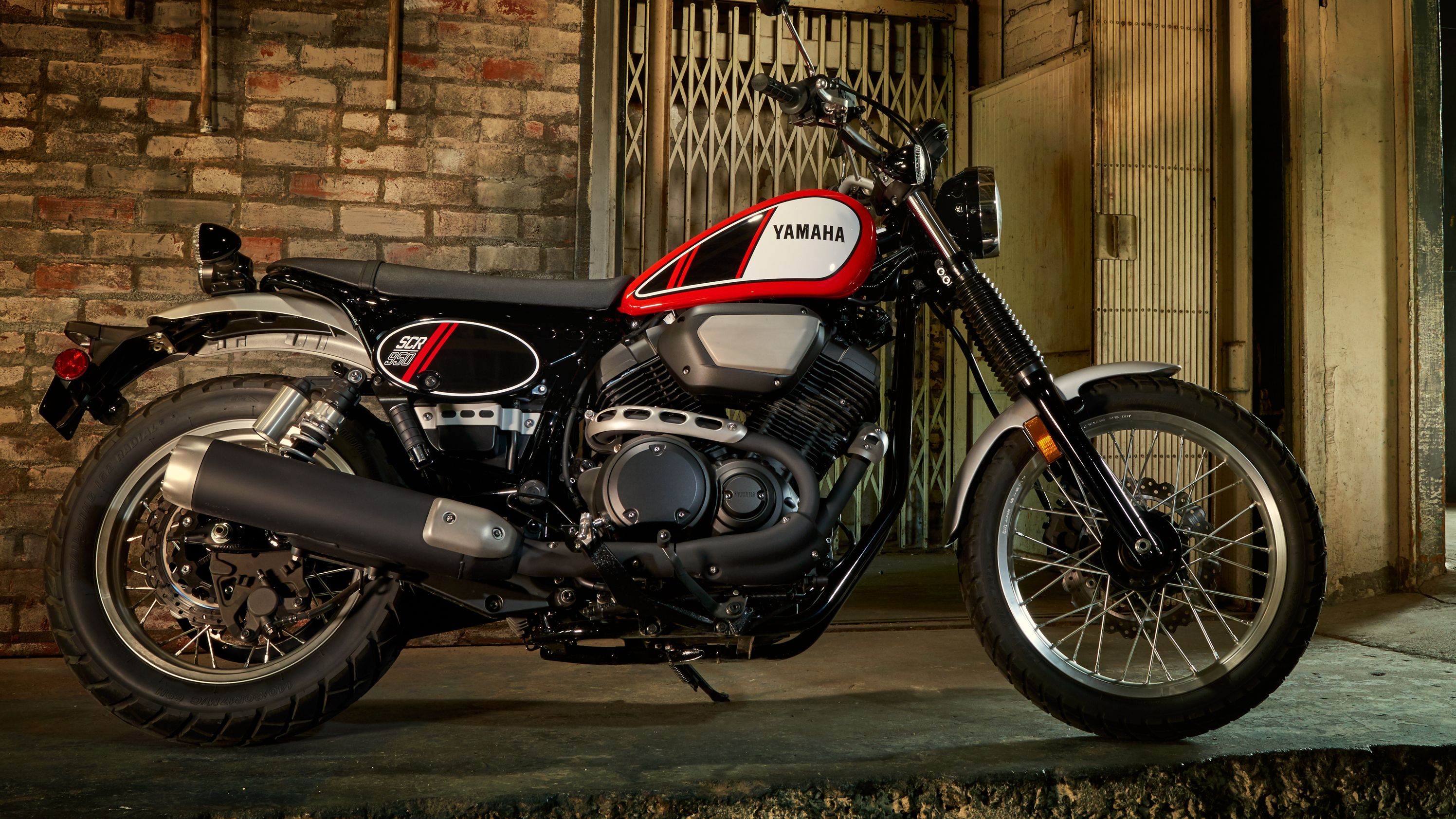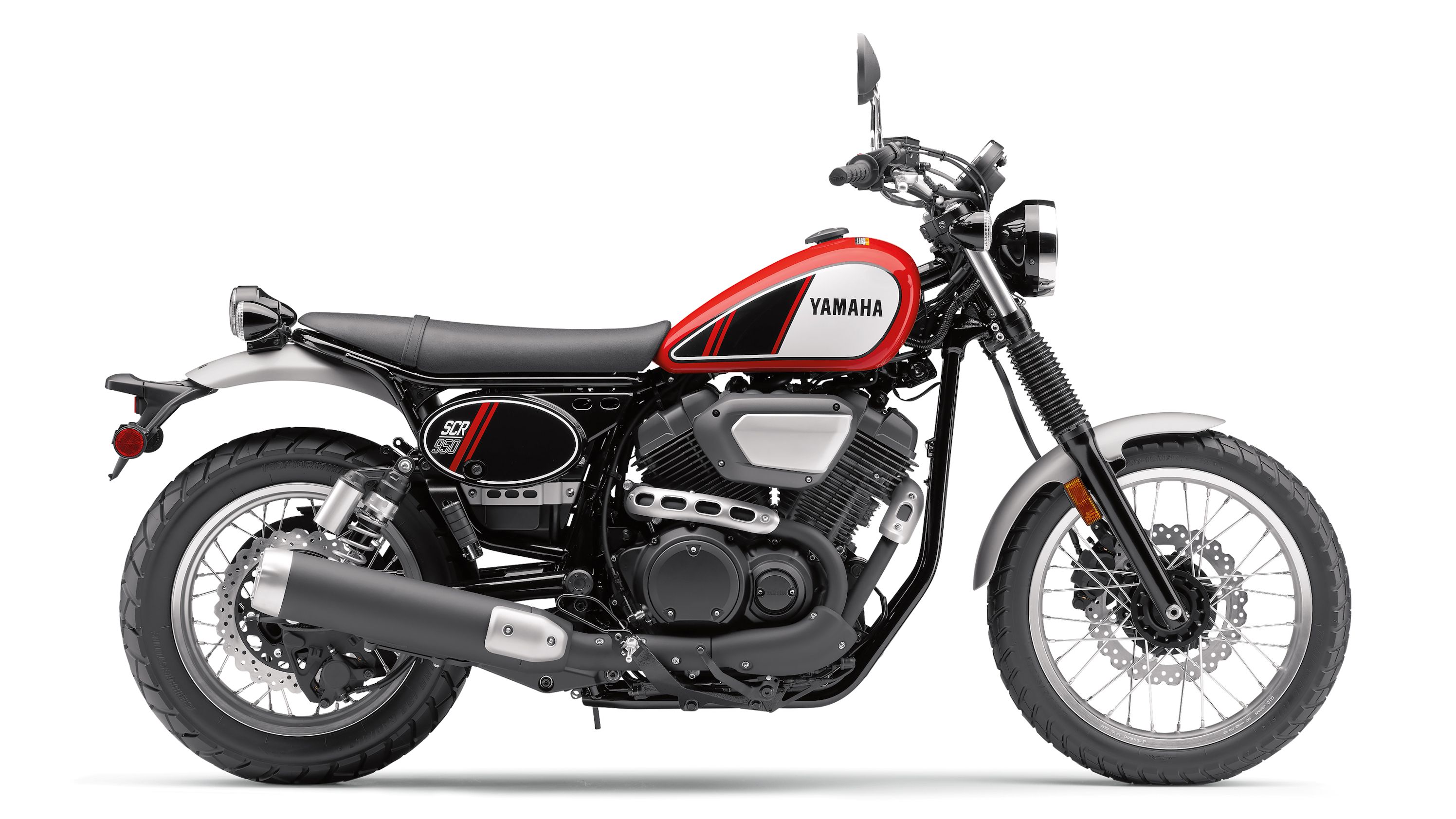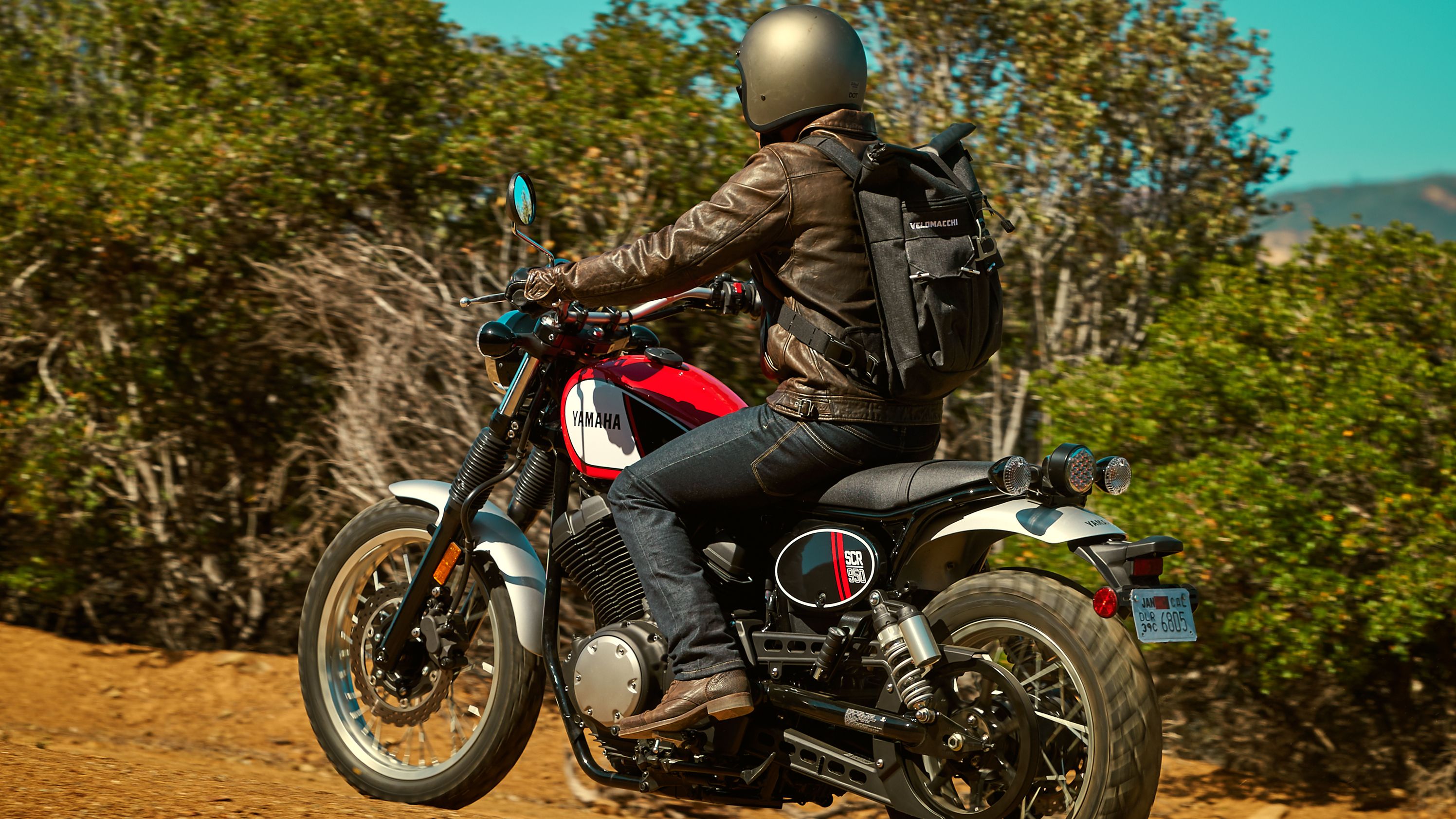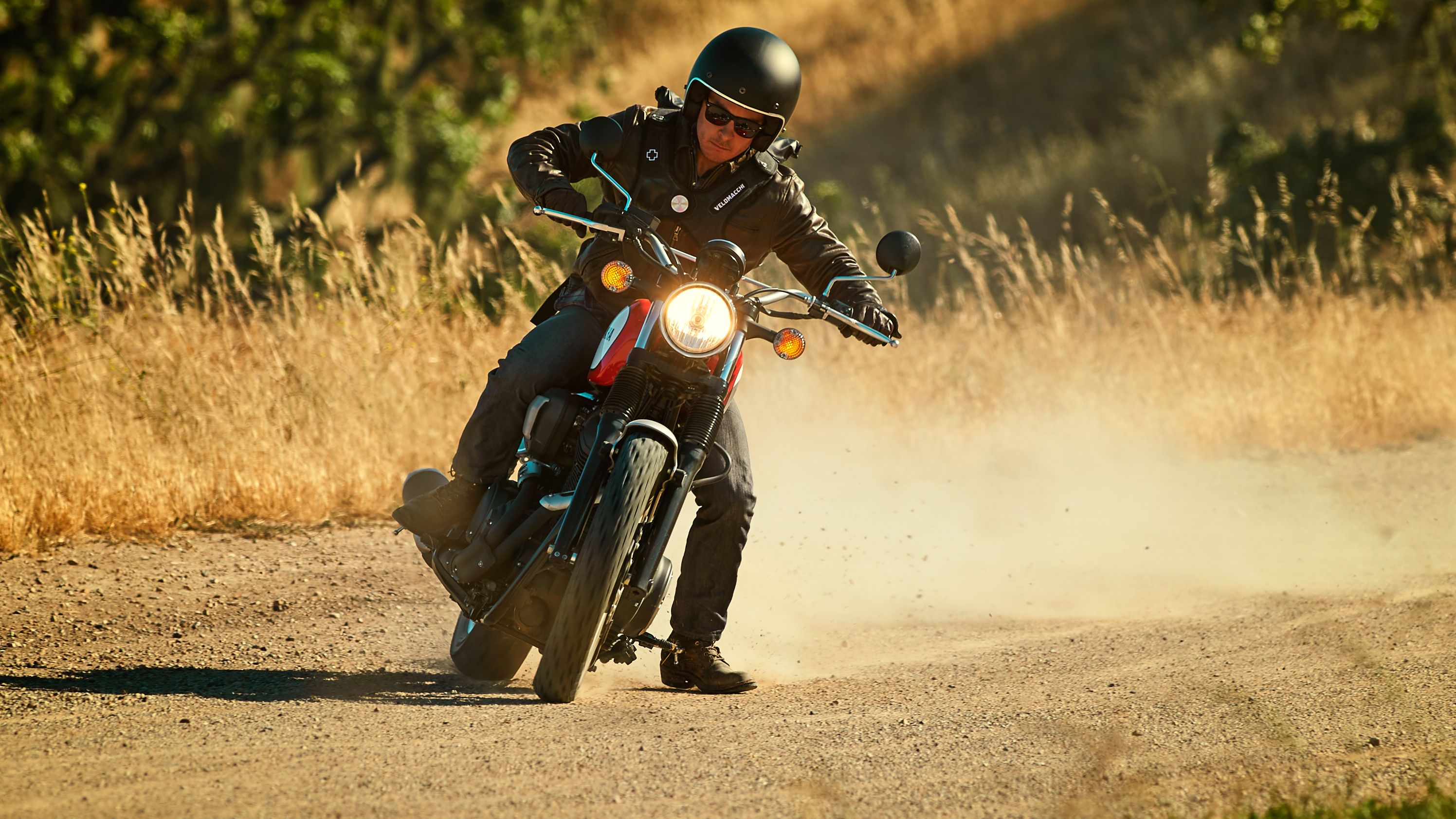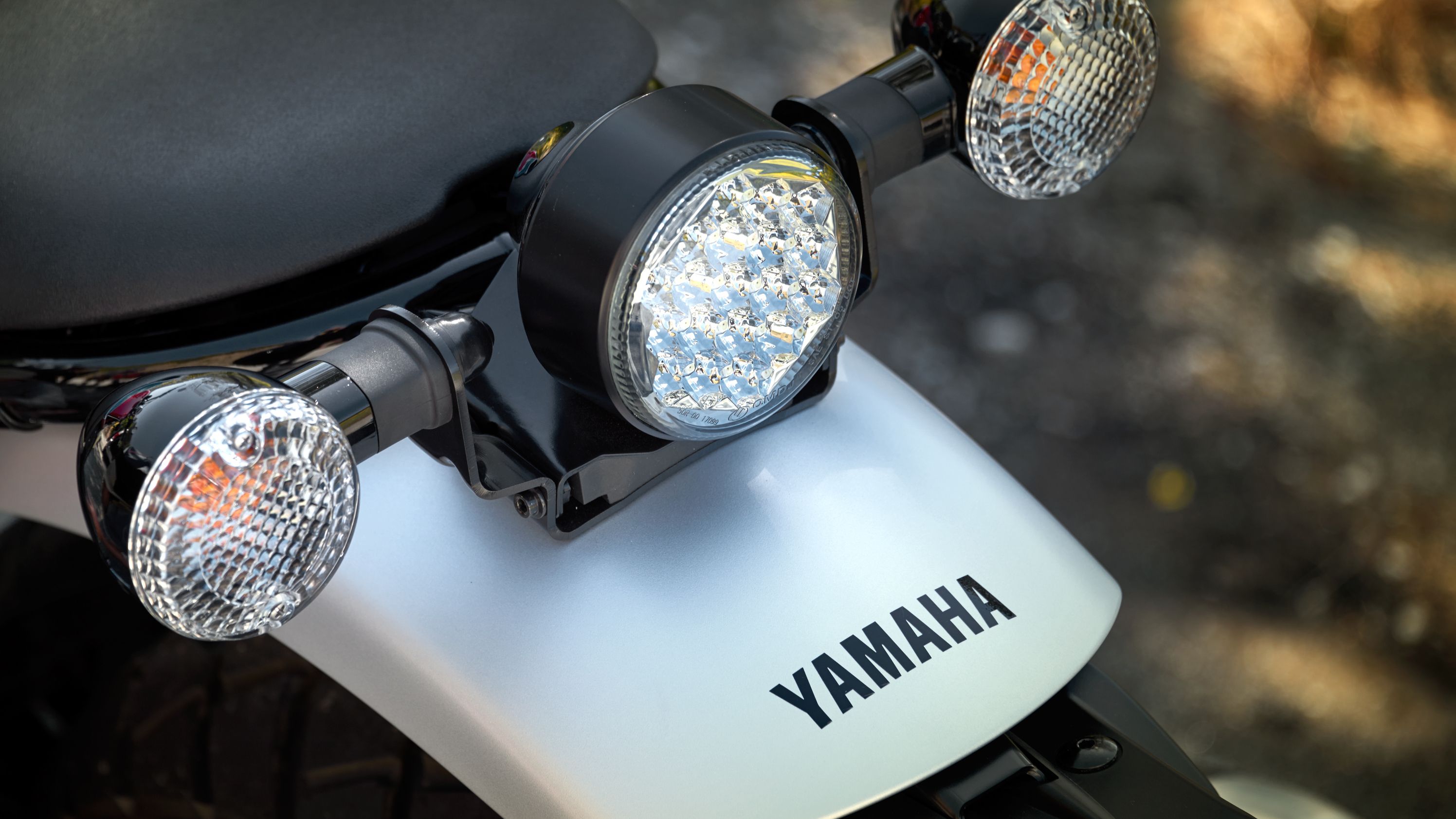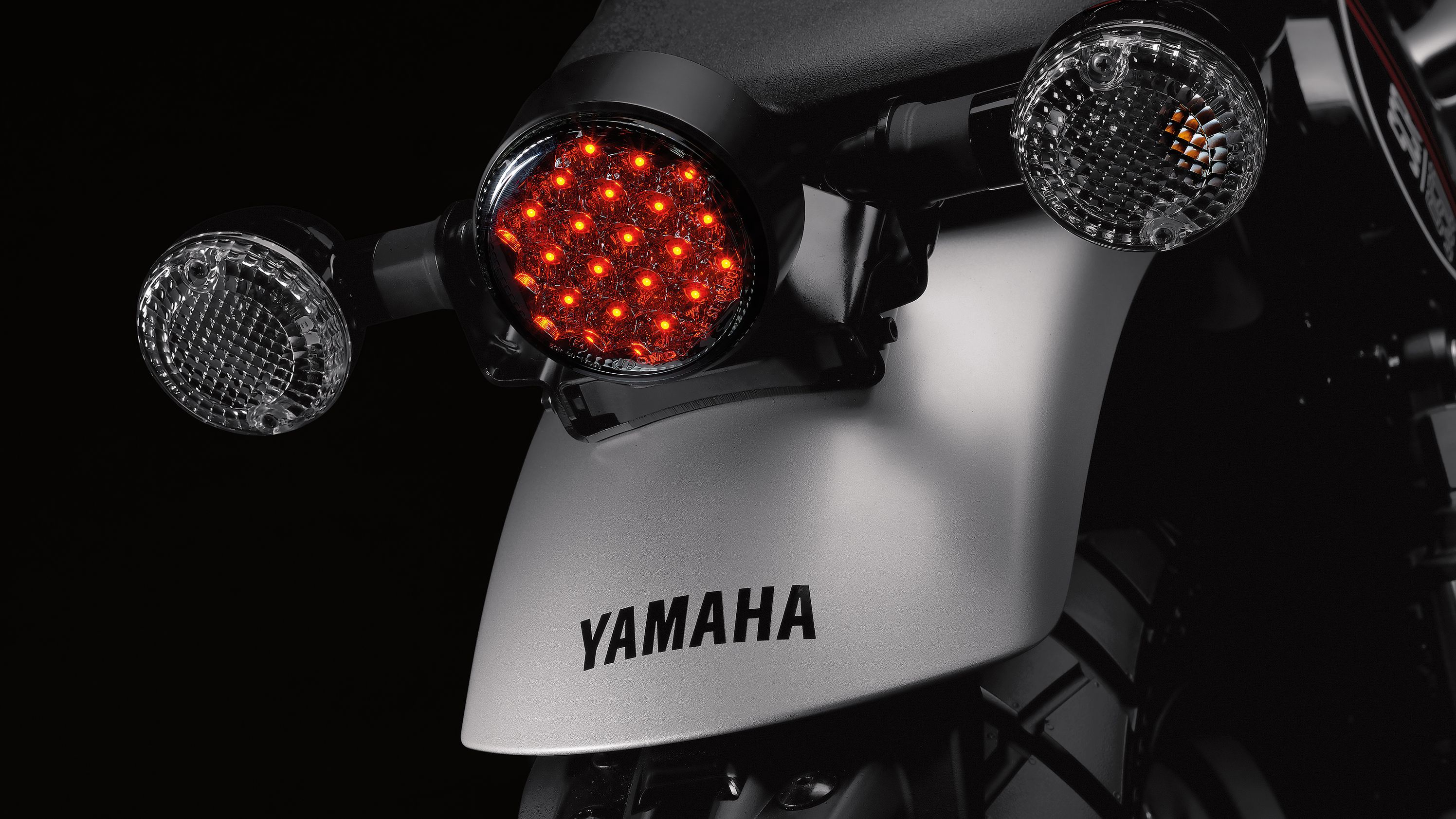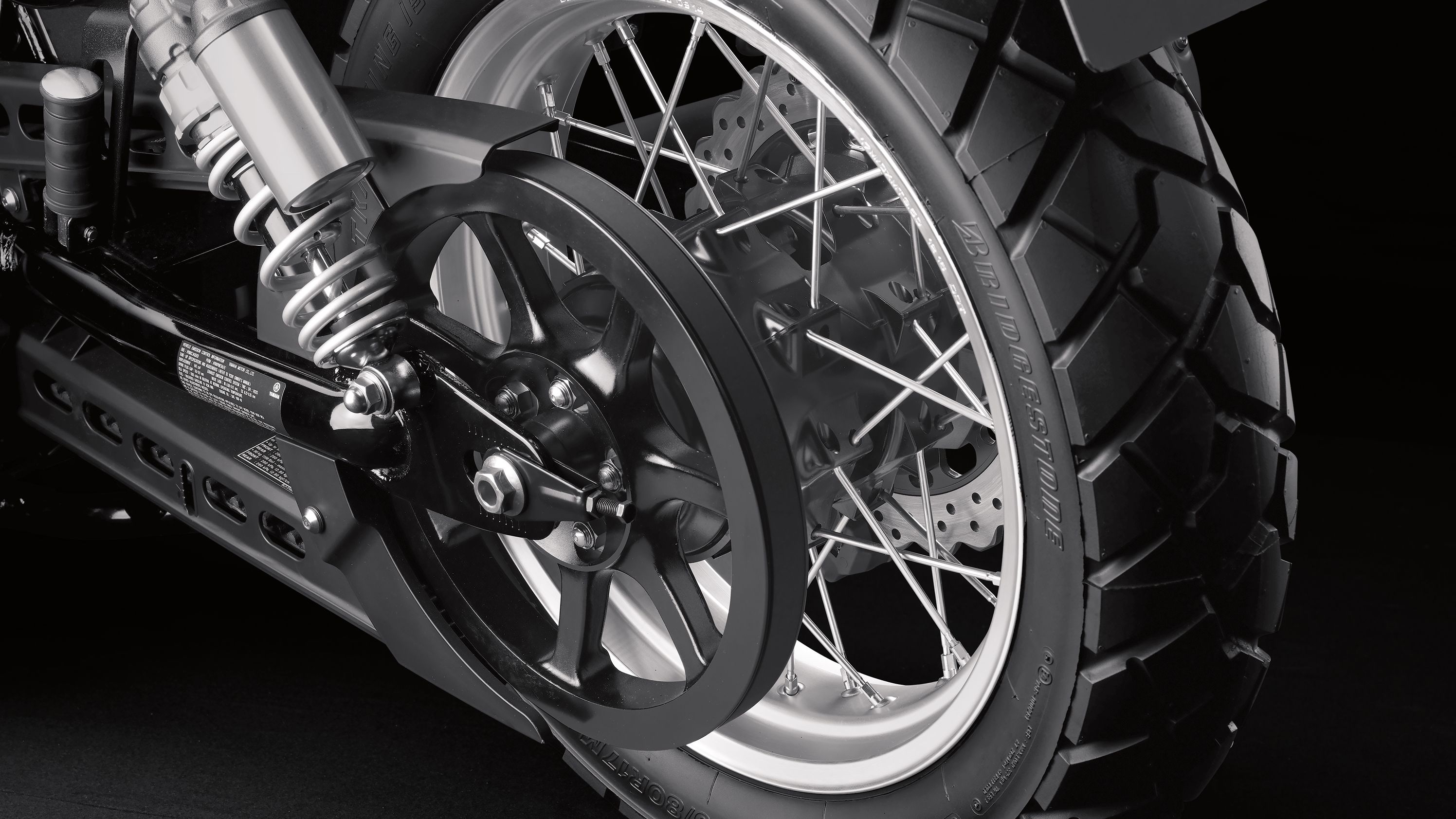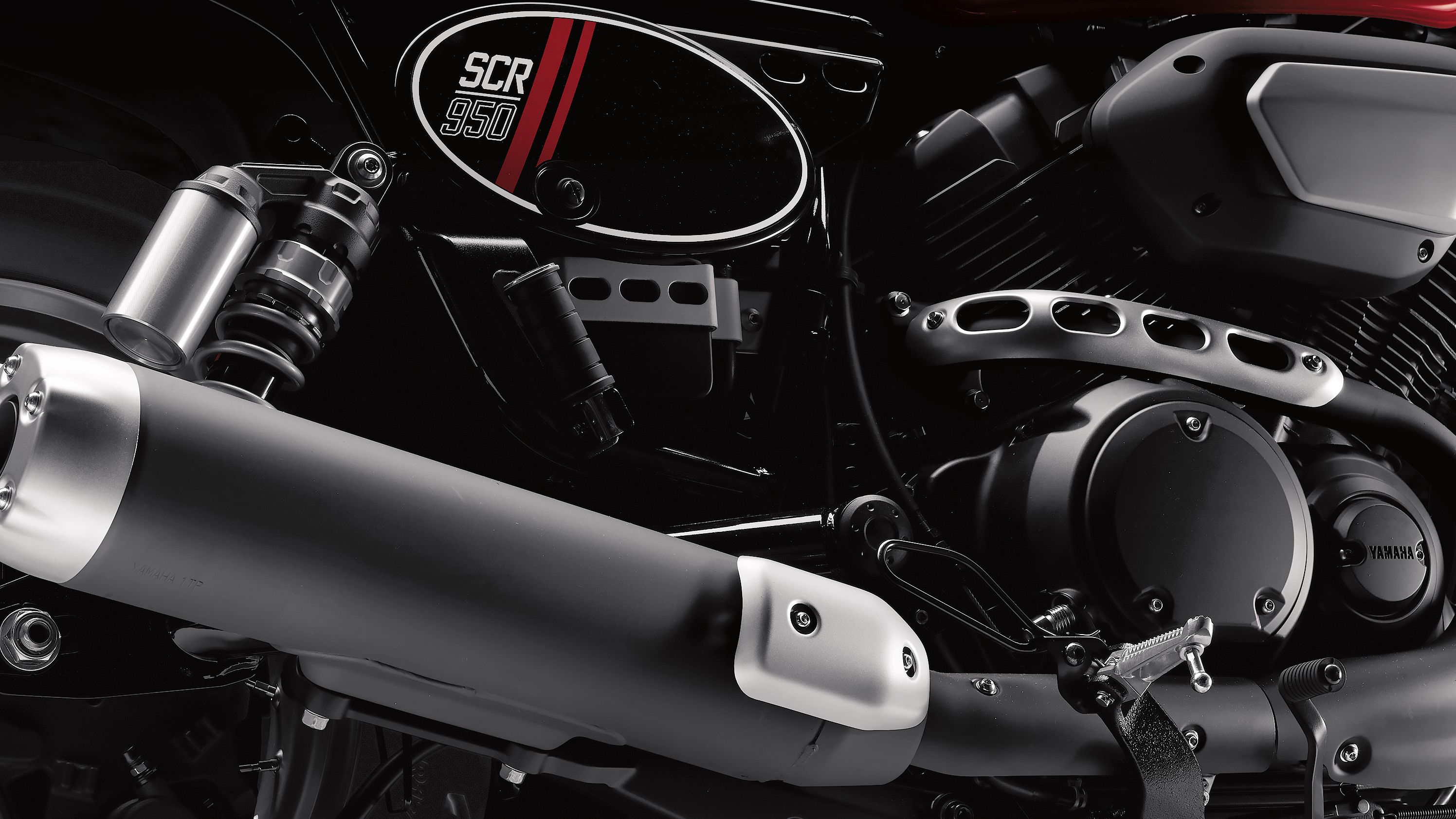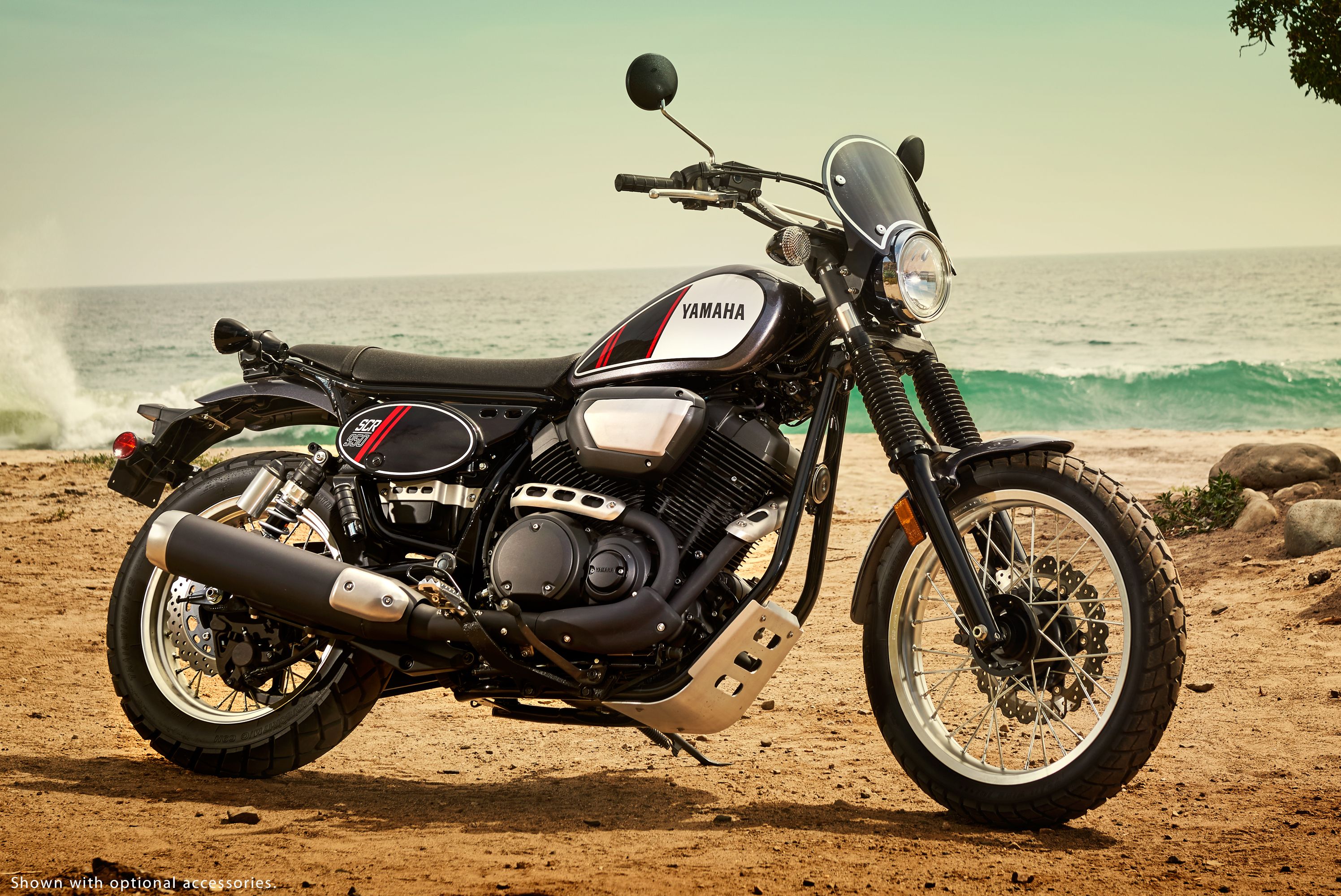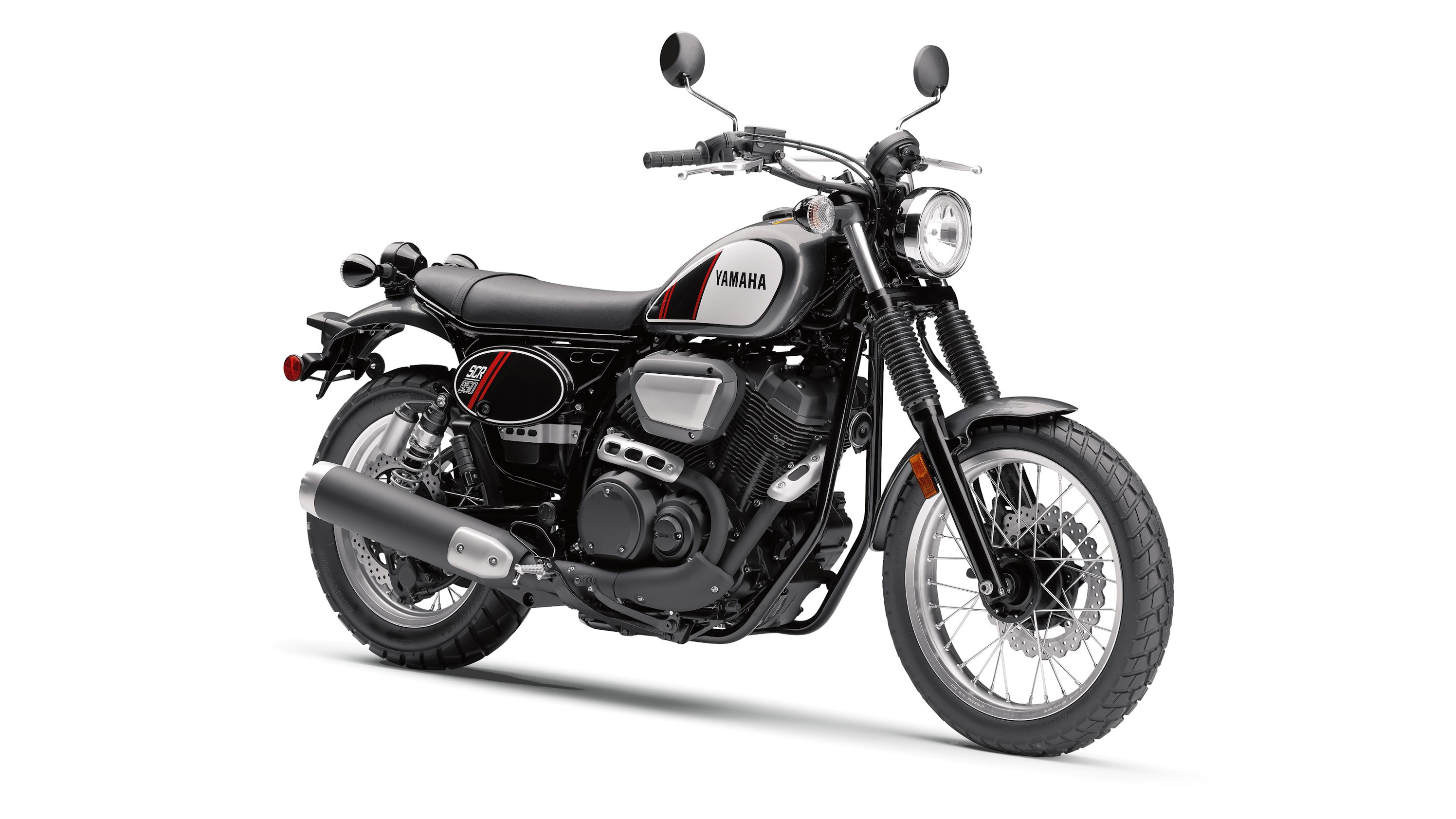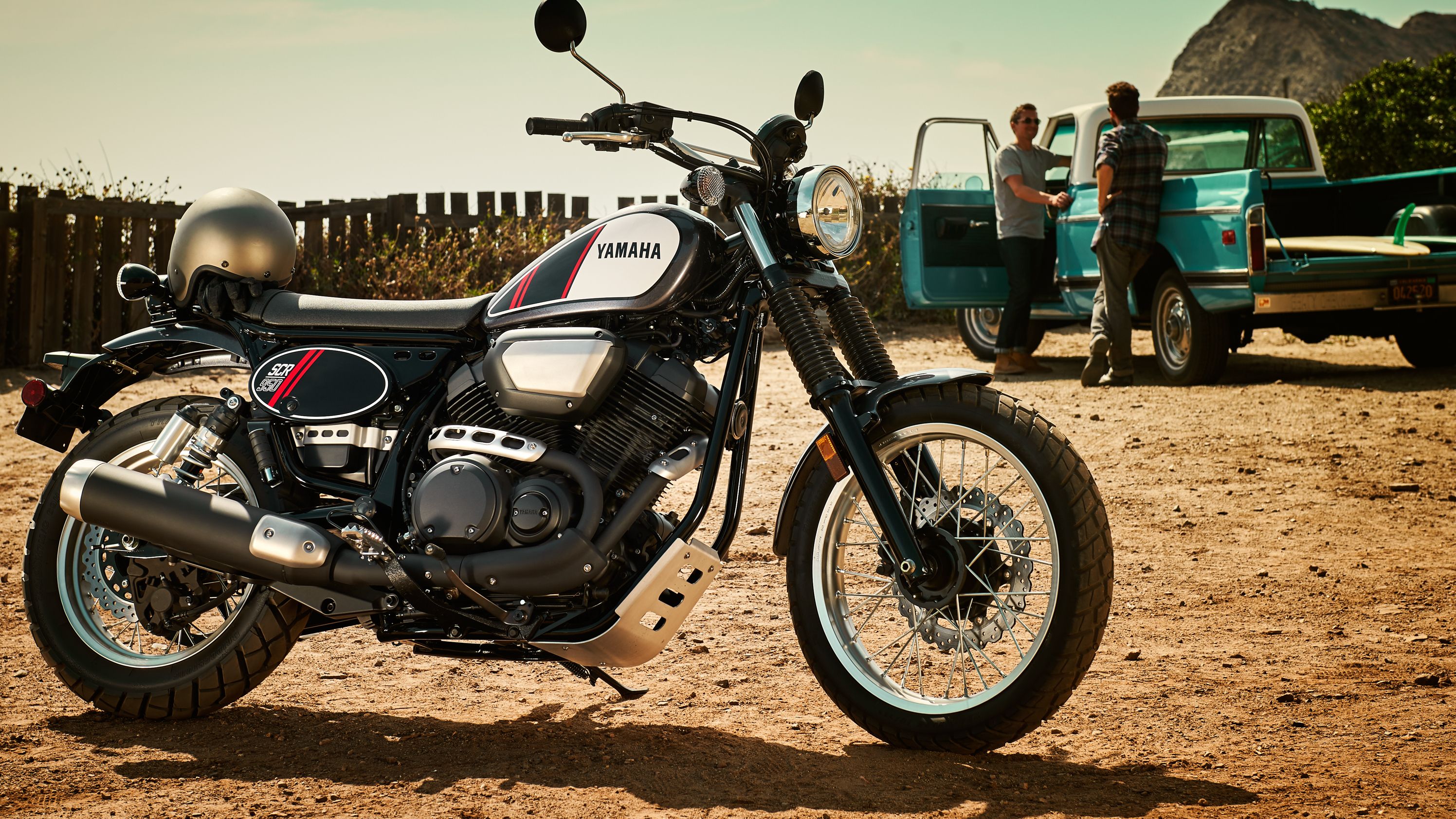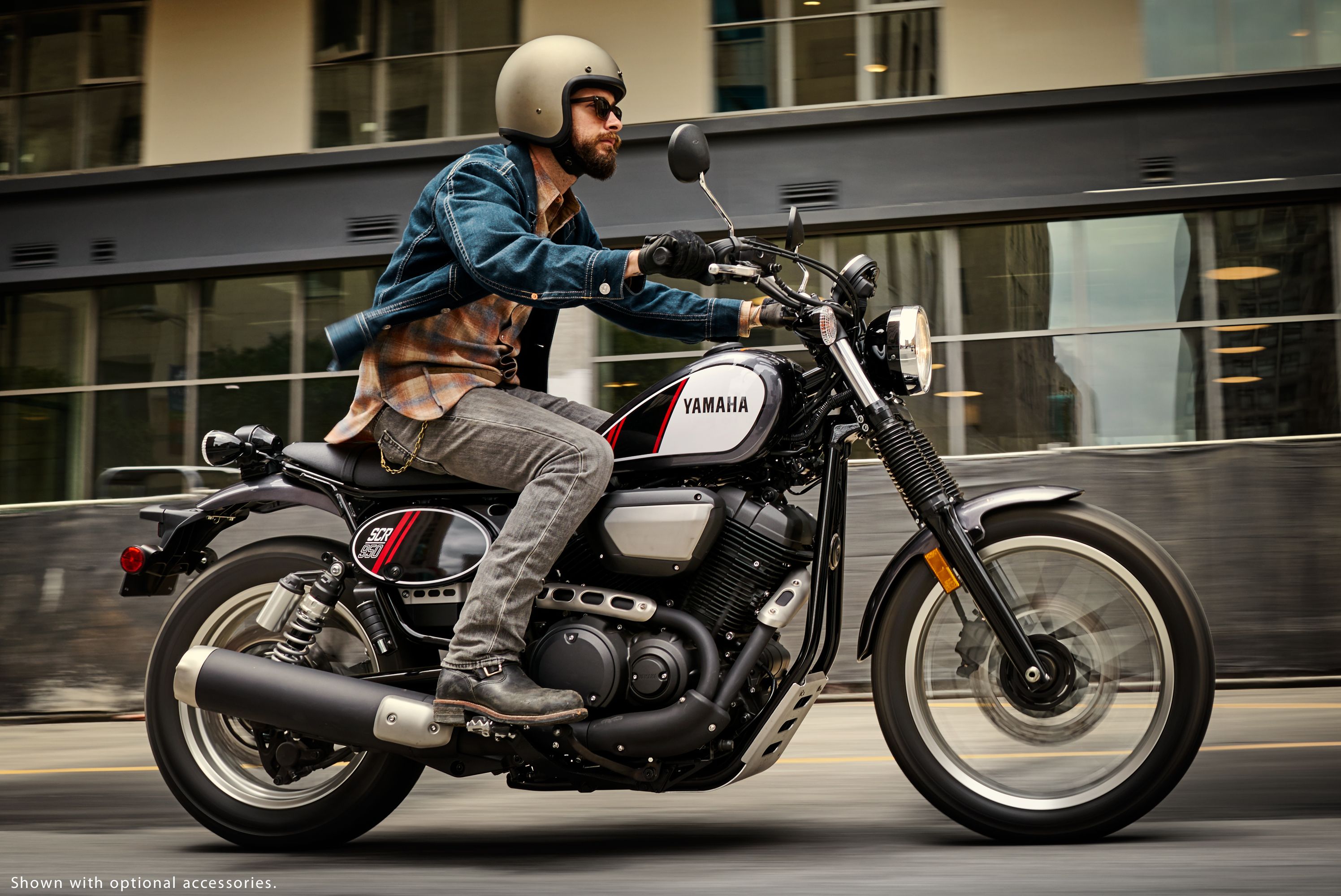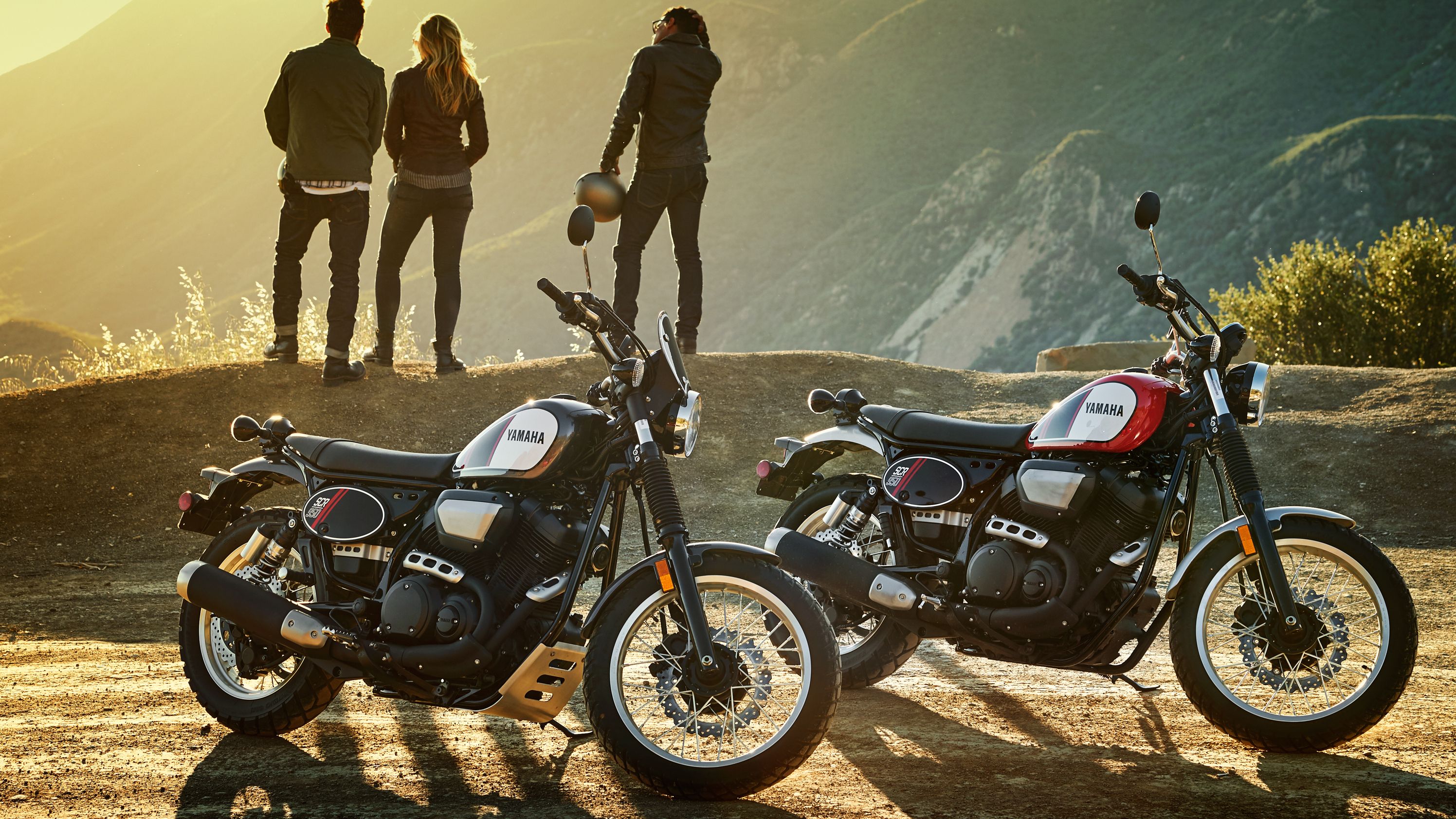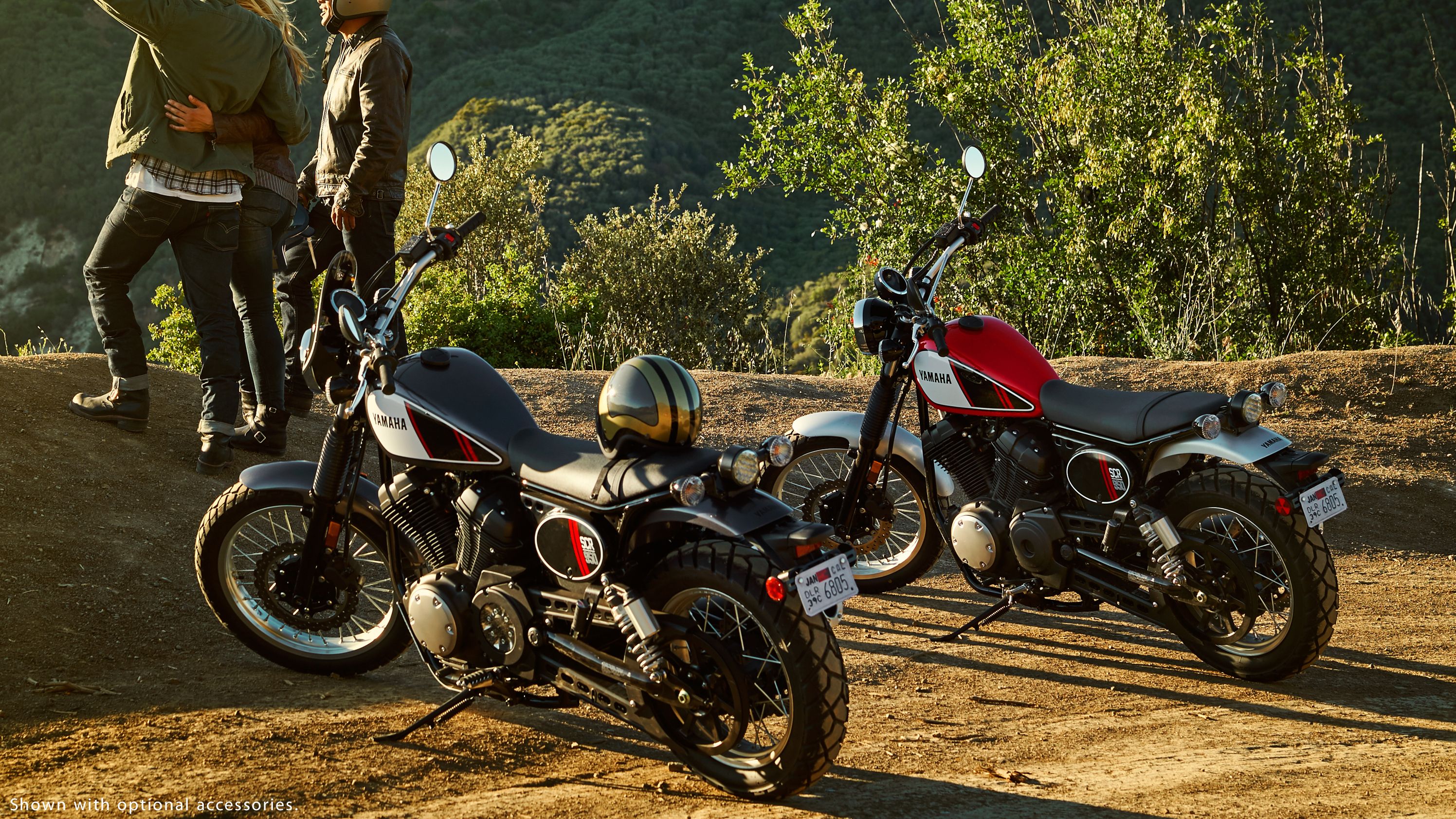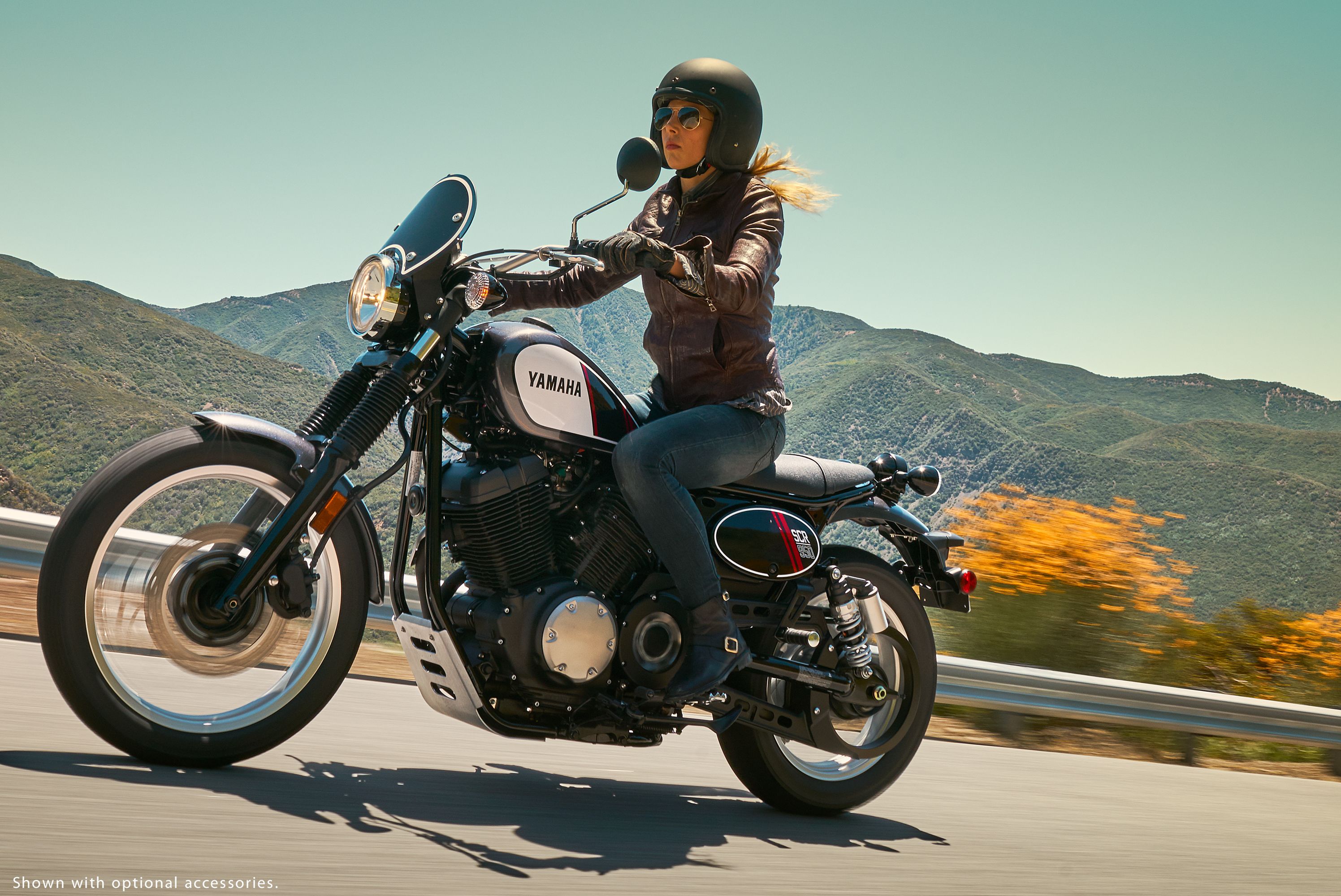The retro war heats up as more manufacturers jump into the fray, and Yamaha finally took the plunge with its new-in-2017 SCR950 scrambler. Based on the Star Bolt, this bike runs the same proven 942 cc mill with a decidedly classic overall flavor dating back to the original scramblers of the '60s and '70s. I must confess that I have an affinity for scramblers, and I already know the Bolt is a heck of a bike, even if it is, shall we say, very 'flattering' to a certain Sportster currently on the market, so it is with high expectations that I approach The Tuning Fork Company's new foray into scrambler territory.
Continue reading for my review of the Yamaha SCR950.
2017 Yamaha SCR950
- Make: Array
- Model: 2017 Yamaha SCR950
- [do not use] Vehicle Model: Array
Design
The scrambler revival is just one part of the burgeoning interest in retro-style bikes, with cafe' racers and other UJM variants also enjoying a comeback. I would argue, though, that the recent spike in popularity of the dual-sport and adventure-bike models may be a boon for the grand-daddy of dual-surface rides, and make its resurgence even more relevant.
Originally, scramblers were pretty much just standard, UJM streetbikes modified for off-road use. Some were factory made, but the majority were homejobs built in garages across the U.S. and Europe, and they remained popular until the advent of the enduro class around the mid-'70s. So, it comes as no surprise that the factory started with a made-for-the-U.S. market, standard cruiser it already had in the stable.
Bellows gaiters on the front forks and laced wheels give the bike a strong off-road vibe right off the bat, and the crossbar-style handlebars look as though they could have been swiped off an old dirtbike. A teardrop fuel tank and bench-type seat makes the UJM-cruiser connection, and the racing-style number plate on the sidecover below the seat and raked exhaust adds a dose of track design to the mix. Since the Bolt is indeed a bonafide Standard, and the SCR is essentially a Bolt modified to keep going when the blacktop meets the brown, I consider this bike to be a true scrambler in the classic sense of the word.
Chassis
Even the bones of the SCR are kicking it old-school with a double-downtube, double-cradle assembly that supports and protects the engine. The steering head is set for 28.4 degrees of rake, which with the rest of the rolling chassis factored in, gives us a 62-inch wheelbase with 5.1 inches of trail. Mid-mount foot controls place the legs in a rather neutral position and the bench seat and pullback bars encourage a sporty, but still fairly upright and relaxed, riding position. The bottom rails come with 5.5 inches of ground clearance, and they form the lowest point since the upswept exhaust system keeps the muffler well clear of the ground.
Standard, 41 mm front forks and dual, coil-over shocks float the bike on 4.7-inches and 2.8-inches of travel, respectively. None of this is even close to dirt bike, or even dual-sport capabilities, but it isn't meant to be used like that, and a skilled rider should be able to tackle some pretty tough terrain at low to moderate speeds.
Laced aluminum rims mount dual-surface hoops with a 100/90-19 up front and a 140/80-17 in back, and not only do the spoke wheels add to the old-school charm of the SCR, they serve to take the edge off some of the bumps and jostles associated with off-road work.
A wave-cut profile on the outside edge of the 298 mm rotors provide a certain self-cleaning ability that's handy on loose surfaces, and a bit of extra heat dissipation to boot. The calipers are definitely sized for off-road riding, with a twin-pot, piston-and-anvil binder up front, and a single-piston in back. Not real impressive figures for road riding, but sufficient for its intended purpose. After all, you only have so much traction available off-road, and there's no sense carrying more brakeage than you can effectively use.
|
Rake (Caster Angle): |
28.4° |
|
Trail: |
5.1 in |
|
Suspension / Front: |
Telescopic fork, 4.7-in travel |
|
Suspension / Rear: |
Dual piggyback shocks, 2.8-in travel |
|
Brakes / Front: |
Wave-type disc, 298mm |
|
Brakes / Rear: |
Wave-type disc, 298mm |
|
Tire / Front: |
100/90-19 |
|
Tire / Rear: |
140/80R17 |
Drivetrain
Unlike most early scramblers out there, the SCR950 runs a 60-degree V-twin engine. Yamaha kept things simple and light with air cooling, and a single over-head cam to actuate the four valves within each pent-roof combustion chamber. The 85 mm bore and 83 mm stroke, ceramic-composite coated cylinders define a nearly square engine, and the relatively low, 9-to-1 compression ratio will keep it from running too awful hot while preventing the forged aluminum pistons and bearings from taking a beating.
All this adds up to a 942 cc (58 cubic-inches) displacement motor, and as usual with V-twins, the power comes on early. This mill cranks out 54.1 pound-feet of torque at 3,400 RPM and 48.5 horsepower at 5,400 RPM , not terribly impressive given the 547-pound curb weight, but it's built for controlled technical riding, not big jumps or complicated tricks. A five-speed transmission uses that power to wring 51 mpg out of the rig, and a belt-and-pulley drive makes the final connection to the rear wheel.
|
Engine: |
58-cubic-inch (942cc) air-cooled SOHC 4-stroke V-twin; 4 valves |
|
Bore x Stroke: |
85.0mm x 83.0mm |
|
Compression Ratio: |
9.0:1 |
|
Fuel Delivery: |
Fuel injection |
|
Ignition: |
TCI: Transistor Controlled Ignition |
|
Transmission: |
5-speed; multiplate wet clutch |
|
Final Drive: |
Belt |
Pricing
This is a fun little ride, and could be good as a first bike, or as a weekend toy. The price is well within reach at only $8,699, but color is limited to Charcoal Silver or Rapid Red, both with a race-tastic, black-and-white tank decal.
|
Warranty: |
1 Year (Limited Factory Warranty) |
|
Color: |
Charcoal Silver; Rapid Red |
|
Price: |
$8,699 |
Competitors
With so many scramblers to choose from, it was tough to narrow down the field. In the end, I decided to look at one of my personal favorites, the Scrambler “Classic” from Ducati. I adore the Duc Scrambler family, I really do, and the Classic is a cute little ride with a decidedly Italian flair, maybe too much. There is no doubt the Duc is capable in the role, but it comes off looking like a concept or tribute bike, whereas the Yamaha is a standard cruiser made by a Japanese manufacturer for sale in the U.S., and it has been modified for off-road use, just like the originals, so I guess you could say the SCR950 comes off as the more sincere of the two.
Ducati does pack on the off-road performance in the standing rigging. A tubular Trellis frame keeps the bones strong but light. Inverted, 41 mm front forks and a preload-adjustable, rear monoshock, both from Kayaba, float the Classic on 5.9 inches of wheel travel, quite a bit more than the 4.7-inch front, and 2.8-inch rear travel on the SCR950.
Ducati also wins out on brakes, with a 330 mm disc and four-pot caliper up front and a 245 mm disc and single-pot caliper in back, all with ABS as standard equipment that allows you to use those big brakes safely. Yamaha offers no ABS equipment on the '17 SCR, but there's always next year I suppose.
Power output is always important, and Ducati shows its experience with the L-Twin, 90-degree, Desmodromic engine. The oversquare Duc mill runs an 88 mm bore and 66 mm stroke, with a fairly hot 11-to-1 compression ratio, but only 803 cc total displacement that leaves it 139 cubes short of the 942 cc Yamaha motor. How does that work out, you ask? Better than you might expect. While the Scrambler cranks out 54.1 pounds of grunt and 48.5 ponies, Ducati's Desmo spanks it at the dyno with 50 pound-feet of torque and 75 horsepower. Out of fewer cubes. Touche' Ducati.
Yamaha gets a little back at the till with its $8,699 sticker, a sight less expensive than the $10,495 tag on the Classic. Someone with a real taste for the classic look of the original scramblers cannot go wrong with the SCR950. However, if you are more concerned with performance than looks, then the Duc might be the one for you.
He Said
“I like it, even though it's really just a variation on the Bolt, itself a copy of a Sportster. Having said that, perhaps slapping a set of knobbies on a Sporty is the way to go; at least I would have some boss paint options, not the dreadful stock colors and tank sticker that come on the SCR. Price on the Iron 883 is comparable as well, but won't be by the time it's modified to scrambler status. Okay maybe it isn't quite as cut and dry as all that, but a scrambler would be fun and easy enough to build for oneself, if not necessarily cheap.”
She Said
My wife and fellow motorcycle writer, Allyn Hinton, says, “It's a scrambled Bolt with a new subframe and a long, flat, obligatory scrambler seat. It's definitely a make-it-your-own kinda bike. I know my husband likes the Ducati Scramblers, but I might have put it head-to-head with the Triumph Scrambler. That just seems so....so Steve McQueen.”
Specifications
|
Engine & Drivetrain: |
|
|
Engine: |
58-cubic-inch (942cc) air-cooled SOHC 4-stroke V-twin; 4 valves |
|
Bore x Stroke: |
85.0mm x 83.0mm |
|
Compression Ratio: |
9.0:1 |
|
Fuel Delivery: |
Fuel injection |
|
Ignition: |
TCI: Transistor Controlled Ignition |
|
Transmission: |
5-speed; multiplate wet clutch |
|
Final Drive: |
Belt |
|
Chassis: |
|
|
Rake (Caster Angle): |
28.4° |
|
Trail: |
5.1 in |
|
Suspension / Front: |
Telescopic fork, 4.7-in travel |
|
Suspension / Rear: |
Dual piggyback shocks, 2.8-in travel |
|
Brakes / Front: |
Wave-type disc, 298mm |
|
Brakes / Rear: |
Wave-type disc, 298mm |
|
Tire / Front: |
100/90-19 |
|
Tire / Rear: |
140/80R17 |
|
Dimensions & Capacities: |
|
|
L x W x H: |
88.6 in x 35.2 in x 45.9 in |
|
Seat Height: |
32.7 in |
|
Wheelbase: |
62.0 in |
|
Ground Clearance: |
5.5 in |
|
Fuel Capacity: |
3.2 gal |
|
Fuel Economy: |
51 mpg |
|
Wet Weight: |
547 lb |
|
Details: |
|
|
Warranty: |
1 Year (Limited Factory Warranty) |
|
Color: |
Charcoal Silver; Rapid Red |
|
Price: |
$8,699 |
References
See our review of the Ducati Scrambler Classic.


